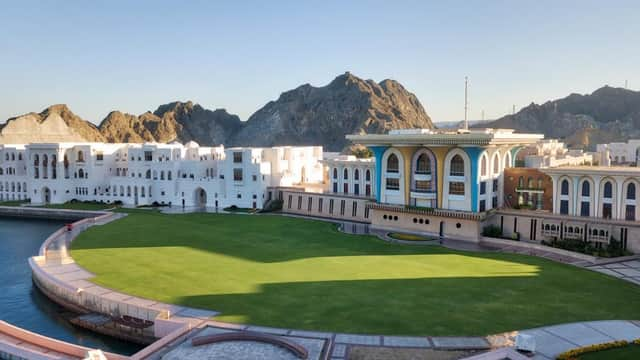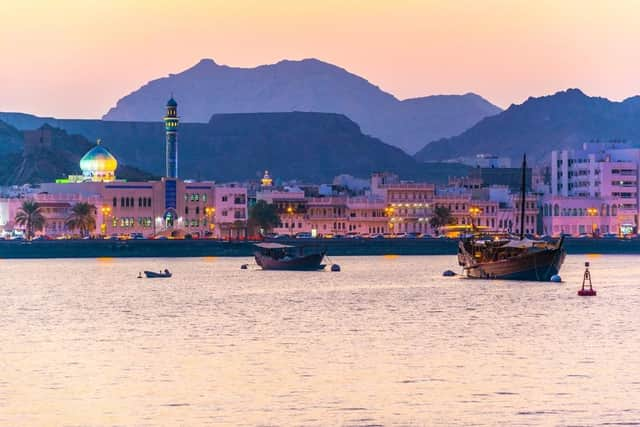Oman travel tips: What to know before your holiday


Oman is becoming one of the most attractive destinations in the Middle East, especially for British travellers.
In fact, travellers from the United Kingdom were the second-most popular visitors to the country (right behind Indians) in recent years. This is due to a few reasons, including the ease of obtaining an Oman visa for UK citizens, the fairly quick flight between both capitals, and the sheer number of amazing things to see and do in the country.
If you’re planning a holiday to Oman, here is everything you need to know.


Weather and climate
The climate of Oman is generally very warm, especially for tourists who have never been exposed to such high temperatures.
The hottest season in Oman is summer, which typically lasts from April to October. The air temperature in some regions can climb to 46 to 48 °С, although the average hovers around 30 to 33 °С. If the temperature is too high, some shops and cafes may even close down or wait to open when the sun goes down!
Those who are more flexible should opt to travel any time between November to April, as this is the winter period in Oman. The temperature drops to a pleasant 22 to 24 °С, and travel becomes much more comfortable.
Travellers who want to escape dreary conditions should look no further than Oman, as there is very little rainfall all year round — the annual rainfall in Muscat, the capital, is only 100 mm (4 in)!
What to see in Oman
The sights of Oman are quite diverse and can be divided into two main types: cultural and natural.
Those who love to learn more about local culture and history should add Muscat to their itinerary as soon as possible. As the capital and largest city in Oman, Muscat contains the majority of the cultural and historical sights.
For example, the Sultan Qaboos Grand Mosque, considered by many to be one of the most beautiful and grand mosques in the world, is located in the capital.
On a similar note, Al Alam Palace, where Sultan Qaboos bin Said lived and welcomed foreign dignitaries, is another popular place to visit. It is located near other tourist attractions like The National Museum of Oman, Bait Al Zubair Museum, and Al Mirani Fort.
Don’t forget to take an evening stroll along the Corniche and buy some souvenirs at the expansive Arab Matrah bazaar. With its endless labyrinths and shops, everything you need is there!
Those who love nature will find themselves at home in Oman. For example, not far from the town of Nizwa is the Al Hoota Cave, which is about 2 million years old!
Of course, what would Oman be without its desert? The Wahiba Desert is spread throughout the country and is a popular area to go camping, jeeping on the dunes, or even visiting local Bedouins to learn more about their life in the desert.
After visiting the desert, it’s time to cool off at Wadi Shab. This stunning canyon is home to beautiful turquoise lakes, waterfalls, and half-flooded caves. The place is very popular among tourists because of its incredible beauty and is the true definition of an oasis!
No list of travel tips for Oman is complete without its world-famous diving opportunities! Right across the Strait of Hormuz is Musandam, an area that’s a real paradise for scuba divers and snorkelers thanks to its colourful coral reefs.
Transportation in Oman
Oman is made up of more than 80% of desert, and as such, the best way to get between cities is via car or bus.
The most convenient option is to rent a car for a few different reasons. First, the prices for car rentals are very favourable and start at around £15 a day. Likewise, the roads are very good and gasoline is inexpensive (about £0.40 per litre).
Those who prefer not to drive will be pleased to hear that there are plenty of long-distance buses and private shuttles that run regularly and will take you wherever you need to go. On average, a ticket will cost between £15 to 20.
In cities, the easiest way to get around is to use taxi services. These cars are always white and with an orange trim.
Safety
Oman is one of the safest countries to travel, as the locals are extremely friendly and always happy to welcome tourists.
The only kind of danger that you need to prepare for are the high temperatures. To protect yourself from sun damage, it is best to stock up on thick hats, sunscreen, and plenty of water for outdoor activities.
If you are traveling in winter, be aware of "wadi." These are the beds of dry rivers which quickly fill with water during periods of rain. These rapids can swiftly flood seemingly dry areas of land and, in fact, the country even introduced special road signs with "Caution, wadi!" so that travellers can avoid these areas.
Culture and traditions
Friday and Saturday are considered the weekend in Oman. These days are holy for Muslims and, as such, most places are closed or work on a reduced schedule. Be sure to keep this in mind when planning your day.
Speaking of religion... When out and about, you most likely see locals praying (also known as namaz) on the street or elsewhere. If you see this happening, keep in mind that you cannot pass in front of a praying person and/or accidentally step on their prayer rug.
If you arrive during Ramadan, try not to smoke, eat or drink during the day when in public. This is considered disrespectful to locals, as most Omani fast during the day and eat when the sun goes down.